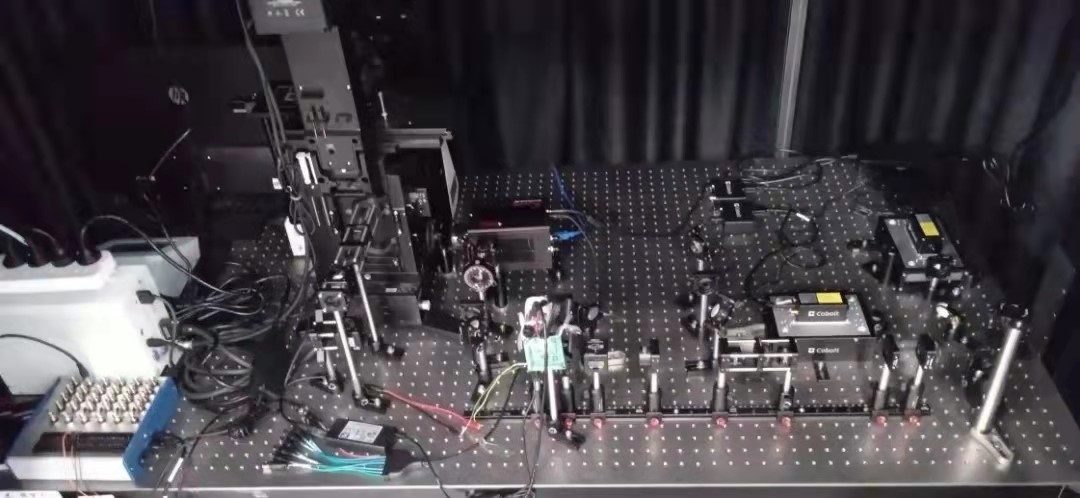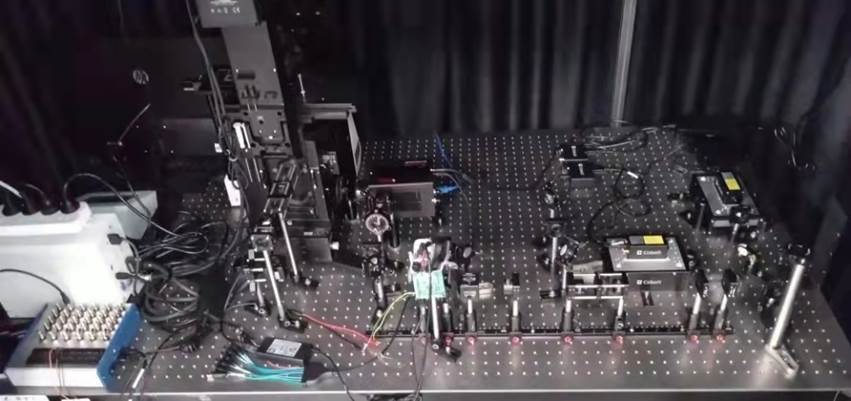As an emerging university of applied sciences, Shenzhen Technology University (SZTU) has a growing demand for more laboratory equipment and instruments with targeted functions. An open competition mechanism has been extended nationwide to select the best candidates to undertake key research projects and SZTU has followed the lead. In 2021, SZTU launched 50 projects of self-made laboratory equipment and instruments with the funding reaching a record high of over ten million yuan. More than 300 students got involved in the projects to develop, design and make the lab apparatus. The following are some projects in which SZTU students participated.
I. Smart gymnasium management system
Since the first phase of the SZTU campus was completed last year, the library, gymnasium and several college buildings have been put into use. A smart gymnasium management system was the first project released by SZTU that required the independent research and development of teachers and students. In June 2021, a team consisting of Mr. Wang Lei from SZTU Information Center and six students was selected to set up the system.

Flap gate with face recognition [Photo provided to Party Affairs Committee Publicity Office]
From last July, the team members have developed the system from scratch, modified the interface design, tested the function and reviewed the code many times. Till now, they have applied for five computer software copyrights. The project itself is both challenging and helpful for students to bring together their knowledge and real-life problems. This self-developed smart gymnasium management system will first be used at the natatorium soon.
II. Multi-functional infrared thermal imaging thermometers
When the pandemic outbreak occurred in early 2020, Prof. Gu Leye instructed three students to complete the self-developed and self-made project of the infrared thermal imaging thermometers in just 18 days. They designed, purchased materials and assembled the devices by themselves and made a batch of thermometers for the university.

Multi-functional infrared thermal imaging thermometers [Photo provided to Party Affairs Committee Publicity Office]
The multi-functional infrared thermal imaging thermometer is composed of infrared camera, tripod, computer and blackbody. The thermal imaging system has different functions including audio alarm for abnormal human body temperature, non-contact temperature measurement (measurement distance around 3 meters), AI face detection, multi-target simultaneous screening, accuracy of ± 0.3 degrees Celsius, and preliminary fever screening. The thermometer is fully automated and responds quickly. When it detects someone with abnormal body temperature or without a mask, the thermometer will give an audio alarm and save the face images.
This project was a great help for epidemic prevention and control at SZTU. Prof. Gu’s team also cooperated with enterprises and provided more than 50 sets of multi-functional infrared thermal imaging thermometers for primary and secondary schools in Pingshan, Shenzhen, which helped a lot for the school resumption at the early stage of the pandemic.
III. Scalable fast structured light super-resolution microscopy imaging system
Optical microscopy is an indispensable research tool in biomedicine due to its little damage to the specimen and abundant imaging results. However, fine details of the sample structures cannot be studied successfully because the diffraction limits the spatial resolution of the microscope to approximately 200 nm. Based on the demand for higher spatial resolution, a team undertaking the project “Scalable fast structured light super-resolution microscopy imaging system” used 100mw 488nm and 561nm lasers as light sources, programed the reflective spatial light modulators, carried out parameter estimation and image reconstruction of the phase and frequency of the mixing frequency image, and transferred the high frequencies to the allowable range of the optical transfer function. In this way, they can break the optical diffraction limit and improve the spatial resolution.


Scalable fast structured light super-resolution microscopy imaging system [Photo provided to Party Affairs Committee Publicity Office]
With high temporal and spatial resolution, the system is suitable for dynamic imaging of living cells for a longer time, and it is cheaper than commercial equipment. Its modular scalable design can also make it enjoy extended functions such as three-dimensional imaging, nonlinear imaging, spectral super-resolution imaging, etc. The team has published the results in Applied Sciences and other international journals, applied for one invention patent, authorized two utility model patents and one software copyright.
Drafted by Daisy(姚琦)/ International Cooperation & Student Affairs Office
Revised by International Cooperation & Student Affairs Office
Edited by International Cooperation & Student Affairs Office
